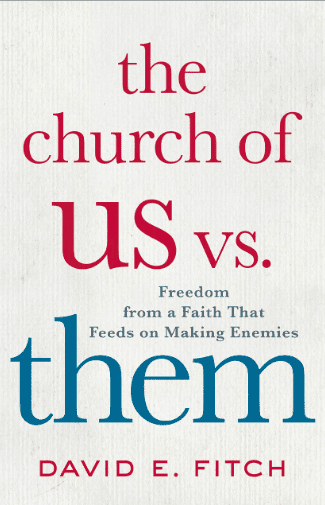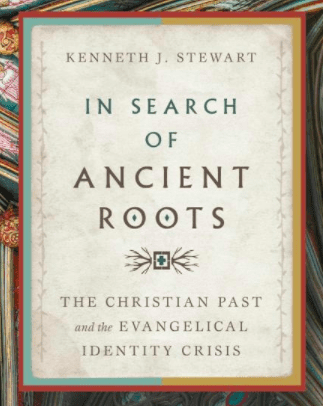I posted this morning on the evangelical coalition and how I hope it can be preserved. Dopderbeck, our friend and regular presence on this blog, disagrees and writes this:
Is The Fundamentalist-Modernist Controversy Over?
We’ve had lots of discussion in recent weeks about “big tent evangelicalism.” Many commenters desire to preserve the “evangelical coalition” represented by a previous generation of leaders such as J.I. Packer and Carl Henry and institutions such as Christianity Today and Wheaton College.
I believe most of this conversation is misplaced. In my view, there never was a true evangelical coalition, there is no such thing as “big tent” evangelicalism, and it is past time for a new generation of leaders to move decisively beyond the fundamentalist-modernist debates from which capital-E Evangelicalism was born. Forget the myth of “big tent evangelicalism” – let’s build something new.
Proponents of big tent evangelicalism often cite Noll and Bebbington’s “evangelical quadrilateral” as a unifying force: Biblicism, Conversionism, Activism, and Crucicentrism. No one can gainsay Noll and Bebbington’s stature as historians, and this quadrilateral, very broadly speaking, has indeed characterized Christians considered “evangelical” from Jonathan Edwards through the present.
Like every broad heuristic, however, these criteria mask significant, often irreconcilable, differences in belief and practice. For example, there was no “coalition” between antebellum southern Presbyterian Calvinist anti-abolitionists such as Robert Lewis Dabney and Christian abolitionists such as Sojourner Truth, but both fall within Noll and Bebbington’s quadrilateral.
Dabney’s extensive Biblical defense of southern slavery is a chilling reminder of the nebulosity of the evangelical quadrilateral. Many evangelicals today would agree with Dabney’s Biblicism and Activism. The following statement by Dabney could be transposed directly into contemporary evangelical political tracts:
And it is a homage we owe to the Bible, from whose principles we have derived so much of social prosperity and blessing, to appeal to its verdict on every subject upon which it has spoken. Indeed, when we remember how human reason and learning have blundered in their philosophizings; how great parties have held for ages the doctrine of the divine right of kings as a political axiom; how the whole civilized world held to the righteousness of persecuting errors in opinion, even for a century after the Reformation; we shall feel little confidence in mere human reasonings on political principles; we shall rejoice to follow a steadier light.
It’s unlikely, however, that any contemporary evangelical would agree with Dabney’s conclusion:
The scriptural argument for the righteousness of slavery gives us, moreover, this great advantage: If we urge it successfully, we compel the Abolitionists either to submit, or else to declare their true infidel character. We thrust them fairly to the wall, by proving that the Bible is against them; and if they declare themselves against the Bible (as the most of them doubtless will) they lose the support of all honest believers in God’s Word.
Countless examples such as this from the history of Christianity in America before the 20th Century demonstrate that Bebbington and Noll’s quadrilateral explains so much that it ultimately explains almost nothing. Immediately prior to the Civil War, “evangelicals” were deeply divided over slavery. In the eighteenth century, “evangelicals” were deeply divided over Calvinism (and Calvinists were divided among themselves between the Old Lights and New Lights). These were not friendly in-house conversations. They were bitterly fought divisions separating Christians who did not consider each other to be living in the same tent.
In the 20th Century, the great division in American Christianity was the fight against modernism waged by the fundamentalists. In fact, the fundamentalist-modernist controversy was in many ways the bastard child of earlier Old Light/New Light divisions.
Henry, Packer and other post-World War II “neo-evangelicals” sought to soften the hard edges of fundamentalism, and in particular to recover the “activist” strain of evangelical cultural engagement. On doctrine, however, they essentially took a side – the side of the Fundamentalists. To be an Evangelical today in the tradition of Henry and Packer is to be doctrinally a Fundamentalist. This is what united American evangelicalism in the post-war era: not Bebbington and Noll’s broad quadrilateral, but rather the Fundamentalist’s fight against the Modernists.
To borrow from the tile of Mark Noll’s excellent book “Is the Reformation Over,” in this early part of the twenty-first century, we who are the second or third generation heirs of Henry and Packer should ask, “Is the Fundamentalist-Modernist Controversy Over?”
Many vibrant theological and ecclesiological trends of recent decades demonstrate that the fundamentalist-modernist controversy was less of a controversy in the Church universal. These include, for example, the post Vatican II Catholic theology and spirituality of John Paul II and Benedict; the post-liberal Yale school; paleo-orthodoxy; the “theological interpretation of scripture” and narrative theology movements; Radical Orthodoxy; missional Barthianism; Lutheran Nicene proto-orthodoxy as represented by Robert Jensen and Carl Braaten; and the resurgence of Eastern Orthodox theology through institutions such as St. Vladimir’s Seminary. All of these movements, of course, inform the sort of moderate-to-progressive evangelicalism that is taught today at places such as Fuller Seminary, Regent College, and, increasingly, Wheaton.
The Modernists who tried to evacuate Christianity of all historic doctrinal content were wrong. But the Fundamentalists who shut their eyes to the contemporary world were also wrong – and this includes the neo-evangelicals who advocated a softer form of fundamentalism still wedded to Biblicism. Christians who self-identify as evangelical, Catholic, Orthodox, post-liberal, and otherwise have learned to use critical methods and to engage modern scholarship and culture without jettisoning the core convictions of the historic Creed.
Nevertheless, for many contemporary left wing liberals and right wing culture warriors alike, the key dividing line remains fundamentalism versus modernism.
Why should we exert lots of effort trying to live in the same tent with these anachronistic throwbacks who want to refight our great-grandfathers’ battles?
Give me a label like “missional,” or “follower of Jesus” or just “Christian,” and let me shelter under the broad folds of the historic Christian faith. I will not relinquish the term “evangelical,” but on the other hand, if you think you own the term, I won’t (God help me) get excessively worked up about it. As the Emerging Church folks used to say before that movement fell apart, “we’ve moved beyond all that.”











